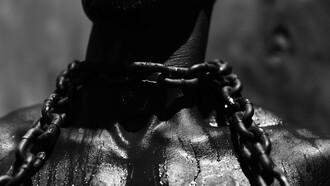Very few countries have established a national program for the safeguarding and rehabilitation of living witnesses to their heritage. Morocco is one of them and it is entitled to pride itself: it is a twelve times secular Kingdom with a rich heritage, universal in scope. Throughout the Kingdom, the ambitious projects that have been finalized or are under way for the restoration of dozens and dozens of living witnesses to the universal heritage. The rehabilitation will help to save:
• The city of Fes, classified by UNESCO world heritage since 1981
• 24 kilometers of centuries-old walls
• 11,000 historic buildings
• Thousands of craft workshops
• 70 km of traditional hydraulic networks
• The first University of Higher Education in the world: AL Qaraouiyinne, which includes many medersa or institutions.
Morocco restores & reopens centuries-old religious schools
Five of these Medersas or Islamic theological schools have been the subject in recent years of restoration work with restoration identical. An ambitious program of restoration and enhancement of heritage elements with high royal solicitude and personal follow-up on the ground by HM King Mohammed VI, the Medersa Al Mesbahiya, more than six centuries old, has thus recovered its architecture of yesteryear, in particular its dome collapsed decades ago.
The Medersa Al Mesbahiya is also called Medersa Rokham (marble) or Medersa El Khossa (fountain), it was erected north of the Quaraouiyine mosque by the Merinid Sultan Abu El Hassan in 1347. It owes its name to Mesbah Al yaslouti, first scholar who taught courses in religious sciences. In time, each Madrassah taught a specific lesson for the benefit of its students. Thus, Mesbahia Madrasa, for example, specialized in religious sciences especially the seven readings of the Holy Quran. The Medersa Mohammadia was an annex to the Medersa Seffarin (dating back to the end of the 13th century). It now hosts students of Quaraouiyine.
As for Seffarine, it represents the first medersa of the Marinid era in Morocco. Its minaret gives it a distinguished character: The Medersa Asseffarine is an architectural jewel of the 13th century. It was and remains a training institution that qualifies the students to access Al Qaraouiyine University, in the channels of Koranic studies, hadith, exegesis, Islamic thought and various issues of universal culture. This Medersa is today a reference in the teaching of religious sciences to Moroccan students but also African, Arab and European. The Medersa teaches the authentic values of tolerant Islam. The Medersas are institutions of education and dissemination of the noble values of Islam of the middle ground, tolerance and openness to the other.
On the other side of the medina, the Medersa Sahrij located near the Andalusian mosque founded in the fourteenth century by the Merinid Sultan Abu Lhassan is a true masterpiece. It owes its name to the central basin which confers with the elements of architecture, an Andalusian stamp par excellence. Restored identically, the Medersa Assahrij was built in the year 721 of the Hegira, 1321 Gregorian.
The Medersa Sahrij has been entrusted with a new mission and is now specialized in the teaching of Arabic calligraphy, in application of the high instructions of HM King Mohammed VI. The Medersa Assahrij has erected Arabic calligraphy as a specialized branch of Al Qaraouiyine University.
Finally, the Madrasa Sbaiyyine, founded in 723H / 1323 Gregorian by the Sultan Abu El-Hassan Al Marini, was also known at the time of its founding by "al-Madrasa as-Soghra" ("the little Medersa"). it is also known for teaching Koranic psalmody. The reopening after their restoration of these Medersa is able to reinvigorate the medina particularly on the cultural and tourist plans.
Morocco spiritual capital of Fez gets its old position
Today, Fez returns to its role as a center of knowledge and the newly restored madrassas -Mohammadia, Seffarine, Mesbahiya, Sbaiyyine and Sahrij- resume their teaching and accommodation duties for the students of Al Quaraouiyine University from last year.
These wonderful sites are a living testimony of the intellectual and scientific past of the spiritual capital. They are designed especially by Merinid Sultans in neighborhoods of the medina near the souks and mosques. Teaching spaces and architectural jewels of quality, these establishments played a capital role in the diffusion of knowledge, religious sciences and blossoming of the decorative arts of Morocco.
Historically, the creation of these medersas dates back to the 13th and 14th centuries; as a privileged place of welcome for people in search of knowledge. These "schools" provided, among other things, a social role by allowing students to consolidate their skills with brilliant thinkers, theologians and philosophers.
Today, Fez and its monuments and treasures of yesteryear regain their splendor and their flicker: the program of rehabilitation and restoration has already covered about thirty monuments including two historic bridges: the first one, the bridge of Attarrafine goes back to XIth century.
Restoration works have also revived one of the treasures of the universal heritage: Dar Al Mouaqqit, literally the house of the astronomer: a kind of observatory for the astronomer scientist responsible for observing the crescent moon announcing the advent of each month of the Hegira year. The astronomer of Dar Al Mouaqqit was also responsible for scheduling prayer times. Today and after its restoration, Dar Al Mouaqqit sheltered a museum where are exposed ancient Moroccan and Arab astronomical instruments, elements of heritage and authentic Islamic Arab culture.
The ambitious program of restoration of historic monuments is reinforced by projects for the treatment of old buildings and buildings threatening ruins: 2200 buildings of the kind have already benefited in addition to the development of ancient Medinas, Fondouk, Tanneries, Souks and Borj and other fortresses.














